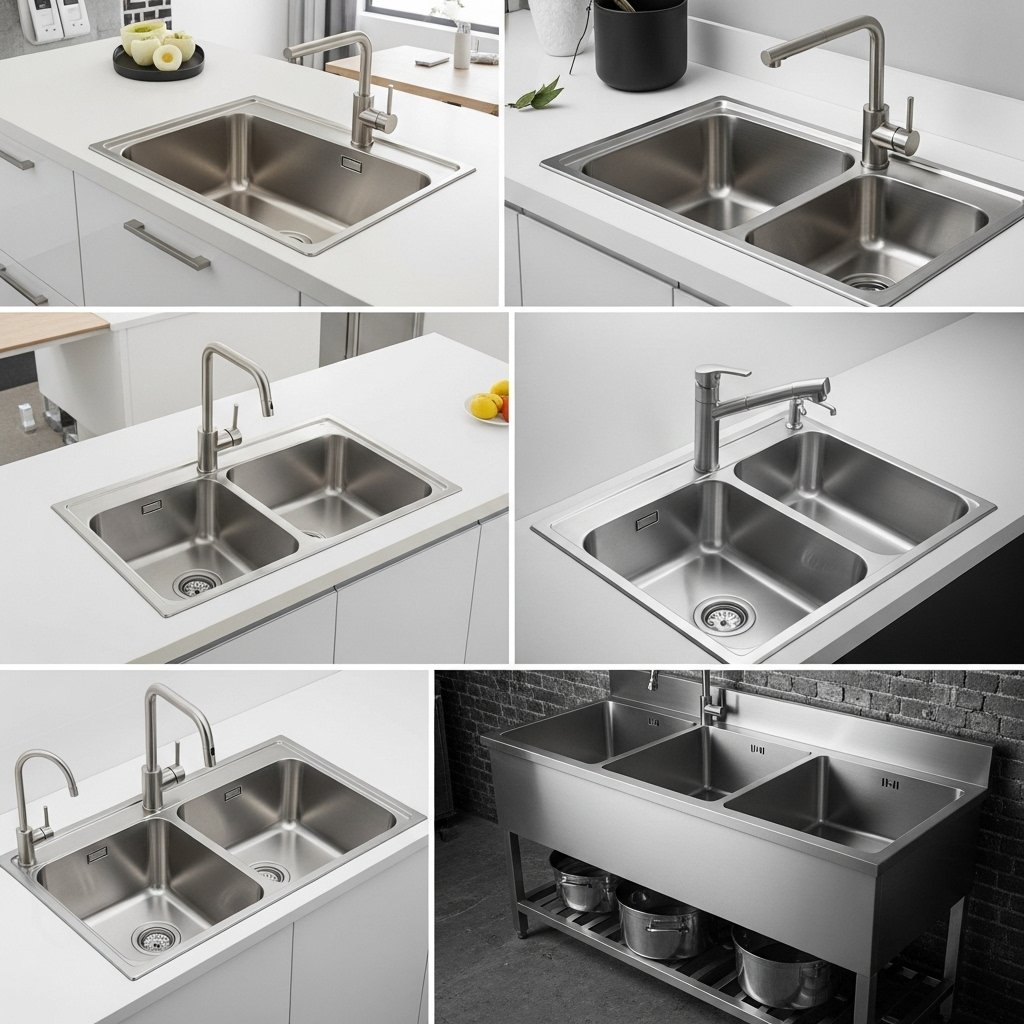The kitchen sink is much more than just a hole in the worktop; it is, in fact, one of the most active and important points in any kitchen. Whether in a residential or commercial environment or a robust industrial kitchen, finding the right size kitchen sink is crucial. This strategic decision has a direct impact on functionality, practicality and the optimization of available space. A well-sized sink can, for example, transform your routine, making it easier to wash large pots and pans and organize your dishes. But how do you know which is the perfect size for your needs?
Ideal Kitchen Sink Size: Use and Volume of Demand (Residential vs. Industrial)
The first and most crucial step in determining the ideal kitchen sink size is undoubtedly to understand the intensity and type of use it will have.
- For Residential Kitchens:
- Moderate Use (Small Families or Dishwashers): If you live alone, as a couple or have a dishwasher that does most of the work, a simple medium-sized sink with a width of between 40 cm and 55 cm may be perfectly adequate. It therefore offers enough space for daily tasks without compromising the usable countertop area.
- Heavy use (large families or frequent cooks): For those who cook a lot, have a large family or like to receive friends, the volume of dishes and the need for space are greater. In these cases, a large single sink (over 60 cm wide and 20-23 cm deep) or a double sink (with two separate sinks) are excellent choices. A double sink, for example, allows you to wash and rinse simultaneously, or use one for dishes and the other for food disposal, optimizing time and organization.
- For Industrial and Commercial Kitchens:
- The demand here is exponentially greater and more specific. The focus is mainly on operational efficiency and sanitary compliance. Sinks for industrial kitchens must be wide and deep to accommodate giant pans, baking sheets and large-volume utensils.
- It is very common to find double or triple sinks. These sinks often have dimensions that exceed 70 cm in width and a depth of more than 25 cm. They are designed for a continuous flow of pre-washing, main washing and rinsing. They often include areas for disposing of waste or for soaking utensils. Robustness and ease of cleaning are maximized to withstand the intense pace and rigorous inspections.
Choosing the Ideal Sink Size: Countertop and Cabinet Space
Before defining the ideal bowl size, it is imperative to accurately measure the space available on your worktop and in the lower cabinet.
- Maneuvering space: It is essential that there is a minimum clearance of at least 5 cm on the sides and back of the sink in relation to the cabinet structure and the wall. This is essential for proper installation, for the passage of hydraulic pipes and for secure fixing.
- Work area: Always remember that the sink is just one part of theworktop. An excessively large sink on a small worktop can, on the other hand, compromise the usable work area, making the space more spacious. less functional for food preparation. Evaluate the balance between the size of the sink and the support surface required for your daily activities.
The Material Makes the Difference: Why Stainless Steel is the Right Choice for Your Sink
Regardless of the ideal kitchen sink size, the sink material is crucial. In this sense, stainless steel is undoubtedly the best option for any type of kitchen.
- Superior Hygiene: Its smooth, non-porous surface prevents the proliferation of bacteria and therefore facilitates thorough cleaning.
- Durability and Resistance: Withstands impacts, scratches, temperature variations and the constant use of water and cleaning products.
- Corrosion Resistance: Does not rust and maintains its shine even in constant contact with humidity and acidic foods.
- Aesthetics: Provides a modern, clean and professional look that adapts to any style of kitchen.
- Sustainability: 100% recyclable, making your choice environmentally friendly and in line with sustainability practices.
Vat Models and Additional Features to Optimize Your Choice
In addition to the ideal kitchen sink size and material, also consider the type of installation. There are built-in sinks (for a cleaner look), overlay sinks (for practical installation), or semi-recessed sinks. Additional features can also add a lot of value. Drain valves, wire baskets for draining dishes, built-in waste garbage cans or integrated soap dispensers can add layers of functionality and practicality. They optimize the use of space and make the kitchen routine more efficient and enjoyable. For even more customized solutions, explore our custom stainless steel projects from SICAINOX.

See more – 6 Advantages of Stainless Steel Furniture: Discover the Benefits that Transform Environments!


